JSON DB Connector
Setting up JSON DB Connector
Create a Database Collection in SearchBlox
- Access Admin Console
Log in to SearchBlox Admin
Navigate to Collections tab - Create New Collection
Click "+" or "Create New Collection"
Select "Database Collection" type - Configure Collection Settings
Name: Enter unique name (e.g., "JSON_Data")
Access: Select Public/Private
Encryption: Enable if required
Language: Select content language (default: English) - Finalize Setup
Click "Save" to create collection

JSON Sample Data
The provided sample XML data is used to configure SQL queries and database URL strings.
Steps to Test the DB Connector:
- Download the XML file.
- Place it in the designated folder.
- Follow the specified steps to verify the DB connector functionality.
{
"people": [
{
"personal": {
"age": 20,
"gender": "M",
"name": {
"first": "John",
"last": "Doe"
}
},
"vehicles": [
{
"type": "car",
"model": "Honda Civic",
"insurance": {
"company": "ABC Insurance",
"policy_num": "12345"
},
"maintenance": [
{
"date": "07-17-2017",
"desc": "oil change"
},
{
"date": "01-03-2018",
"desc": "new tires"
}
]
},
{
"type": "truck",
"model": "Dodge Ram",
"insurance": {
"company": "ABC Insurance",
"policy_num": "12345"
},
"maintenance": [
{
"date": "08-27-2017",
"desc": "new tires"
},
{
"date": "01-08-2018",
"desc": "oil change"
}
]
}
],
"source": "internet"
},
{
"personal": {
"age": 24,
"gender": "F",
"name": {
"first": "Jane",
"last": "Roberts"
}
},
"vehicles": [
{
"type": "car",
"model": "Toyota Camry",
"insurance": {
"company": "Car Insurance",
"policy_num": "98765"
},
"maintenance": [
{
"date": "05-11-2017",
"desc": "tires rotated"
},
{
"date": "11-03-2017",
"desc": "oil change"
}
]
},
{
"type": "car",
"model": "Honda Accord",
"insurance": {
"company": "Car Insurance",
"policy_num": "98765"
},
"maintenance": [
{
"date": "10-07-2017",
"desc": "new air filter"
},
{
"date": "01-13-2018",
"desc": "new brakes"
}
]
}
],
"source": "phone"
}
]
}
- The main object in this JSON file is people
- The structure of objects in the file is represented in the following table.
Learn more on Parsing JSON Data
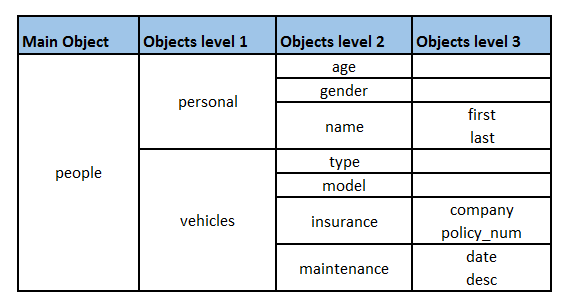
JSON Objects in the file
Database Collection Settings
- Database Type Selection
From the dropdown menu, select "JSON" - Enter the database URL string in the format as shown here:
jdbc:json:DataModel=Relational;URI=file_path.json; - File Path Specification
Provide the complete absolute path to your JSON file
Ensure proper file permissions for SearchBlox service account - Provide SQL Query, which fetches the data from JSON file and saves it.
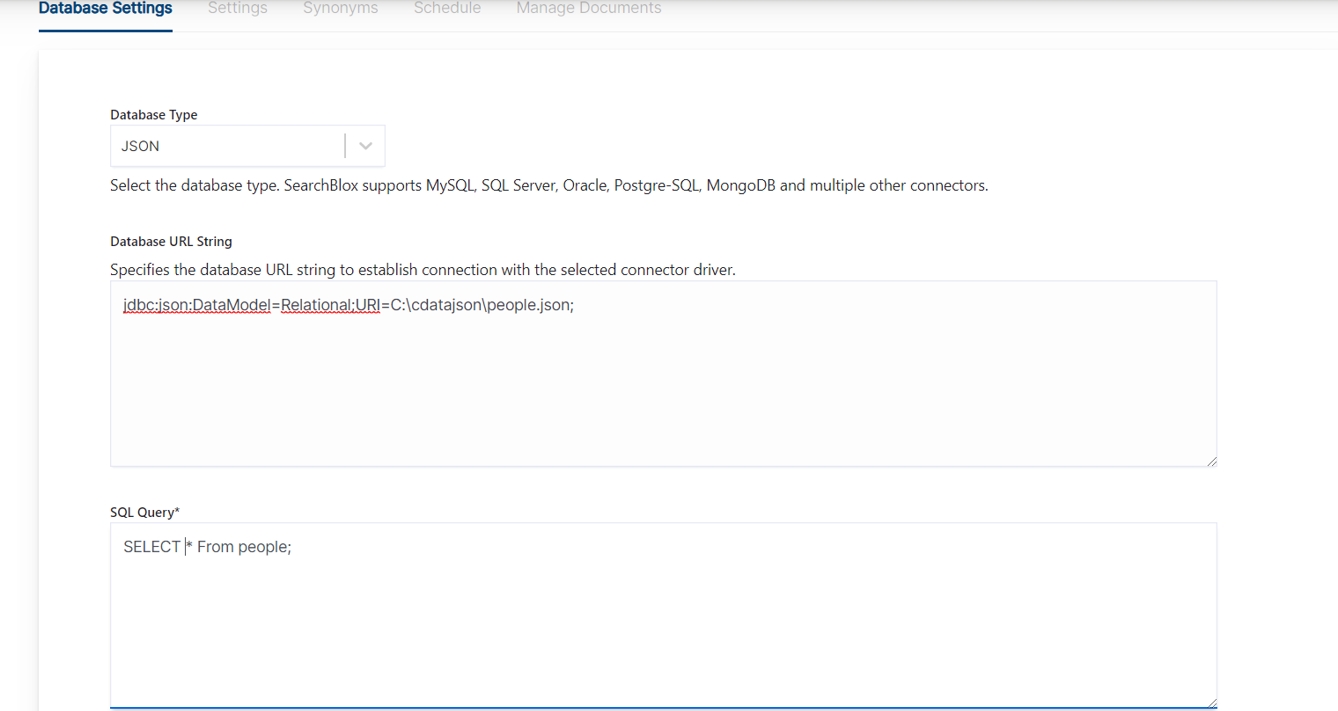
- Save the settings.
- Check the settings by clicking Test Database Collection. The database connection has to be successful for the indexing to work.
Configure SQL Query
- To fetch data from the JSON, a select SQL query must be provided.
- It is mandatory to map a unique field to uid
- The query should follow SQL SELECT query format with mappings. SQL Query for Database Collection
Sample Query for JSON sample data:SELECT <index field> as uid , <column name2> as title, <column name3> as content FROM <tablename> LIMIT 100SELECT [people].[personal.name.first] AS uid, [people].[personal.name.last] AS title,[people].[personal.age] AS age,[people].[personal.gender] AS gender,[people].[vehicles.type],[people].[vehicles.model],[people].[vehicles.insurance.company],[people].[vehicles.maintenance.date] FROM [people]- In the preceding query you can see the fields are represented in terms of hierarchy example:
[people].[personal.name.first] [people].[vehicles.maintenance.date]Reference for select queries for Database JSON Connector
- If you have more than 100 entries in a table, specify the number of documents to be indexed by giving LIMIT value in the query. For example:
Otherwise, a minimum of 50 rows will be indexed.SELECT <index field> as uid , <column name2> as title, <column name3> as content FROM <tablename> LIMIT 100
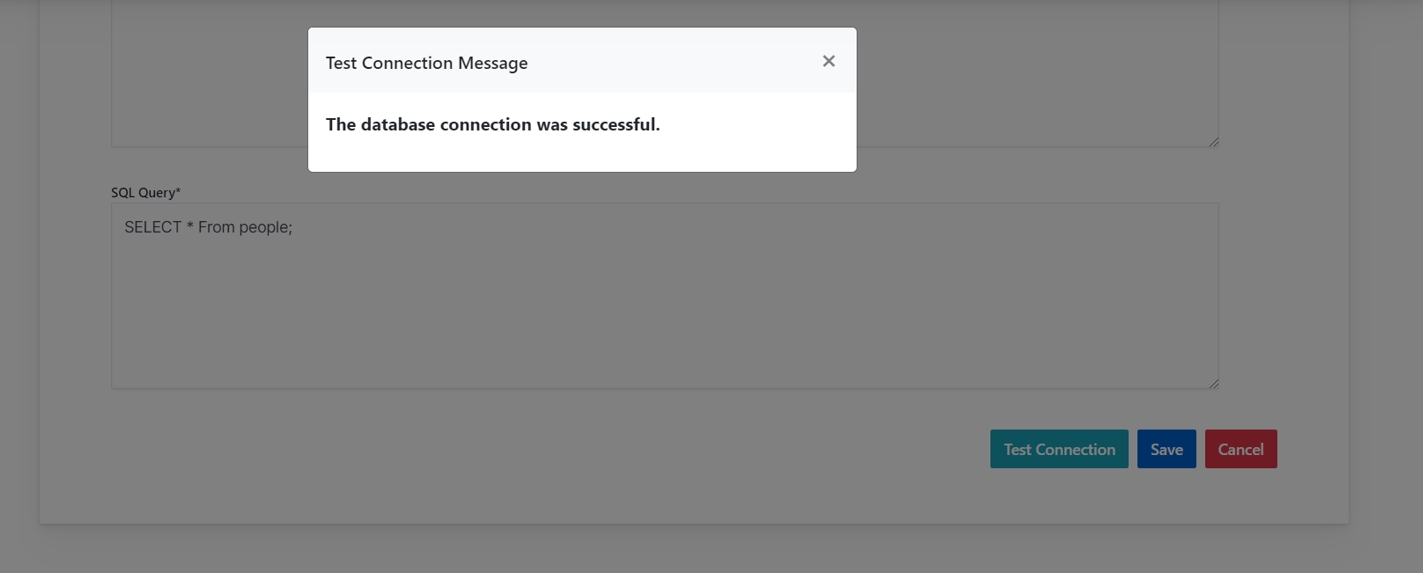
Schedule and Index
Sets the frequency and the start date/time for indexing a collection. Schedule Frequency supported in SearchBlox is as follows:
- Once
- Hourly
- Daily
- Every 48 Hours
- Every 96 Hours
- Weekly
- Monthly
The following operations can be performed in Database collections.
| Action | Description |
|---|---|
| Schedule | For each collection, indexing can be scheduled based on the above options. |
To know more about Database Collection refer Database Collection
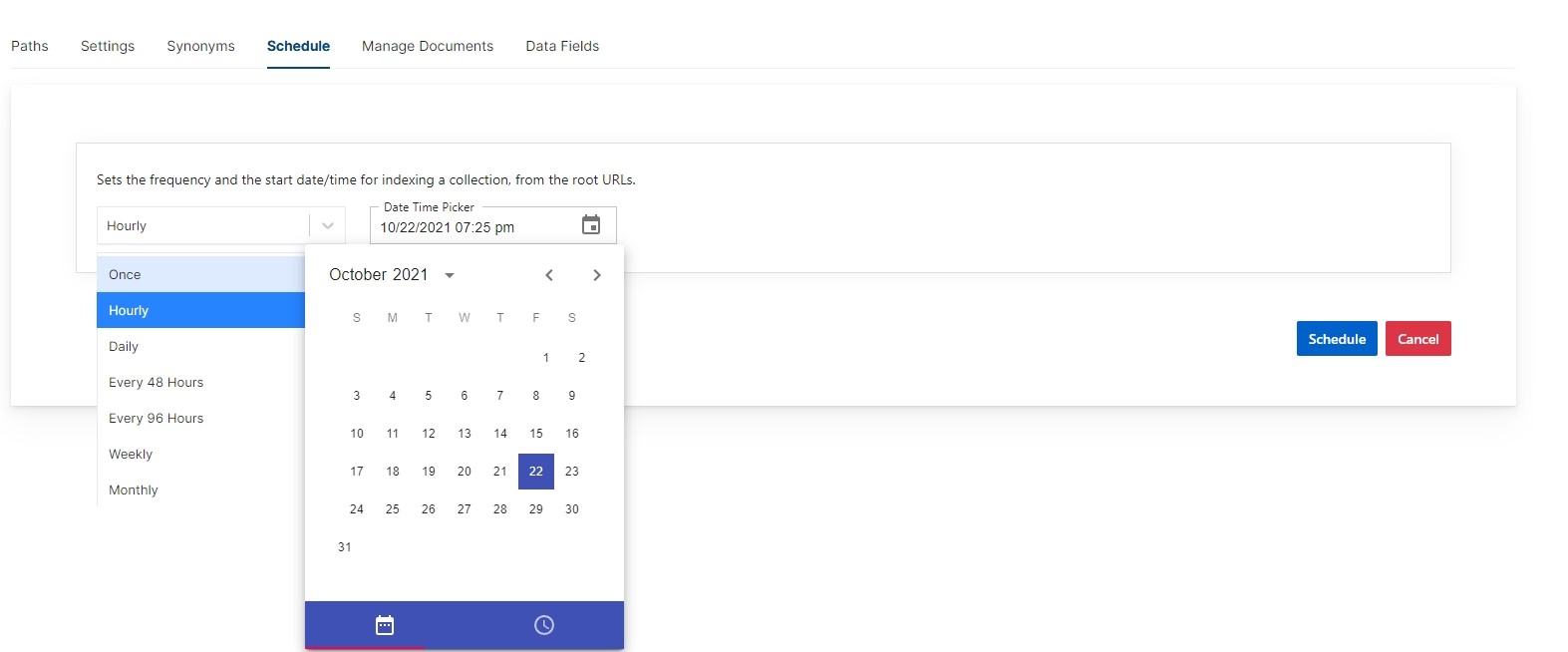
Search results in faceted search is shown here:
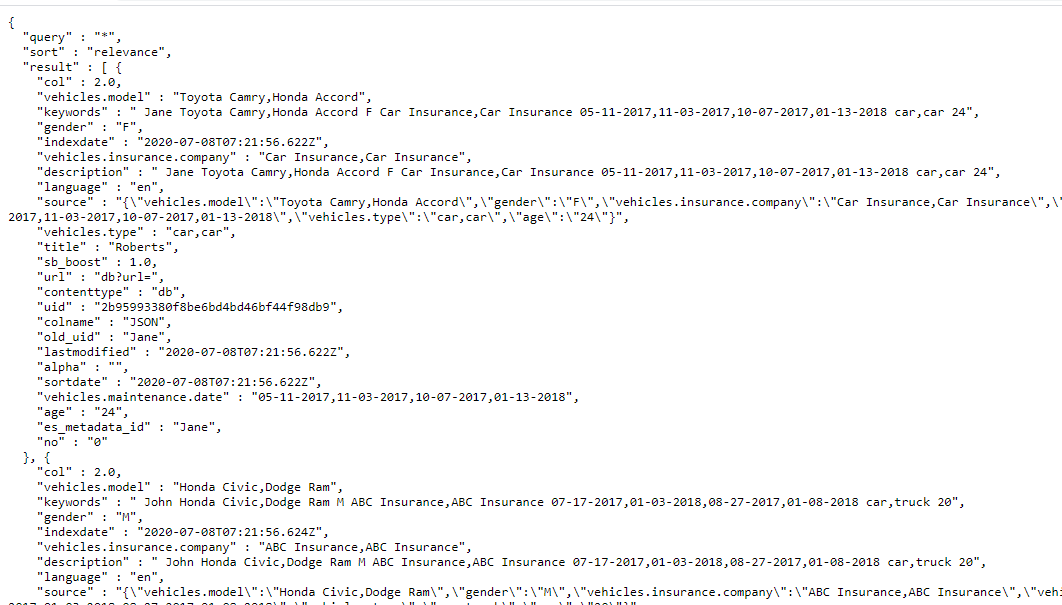
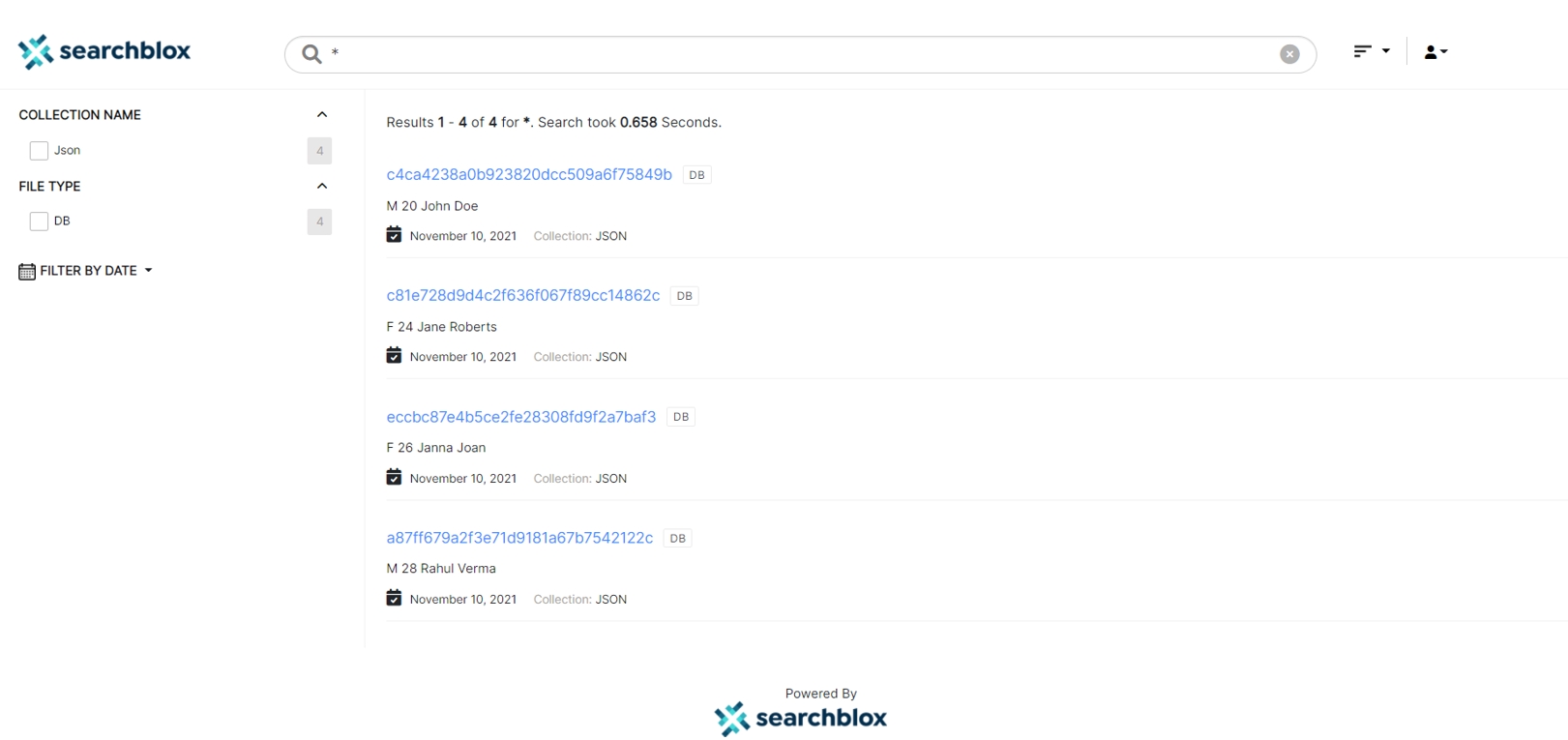
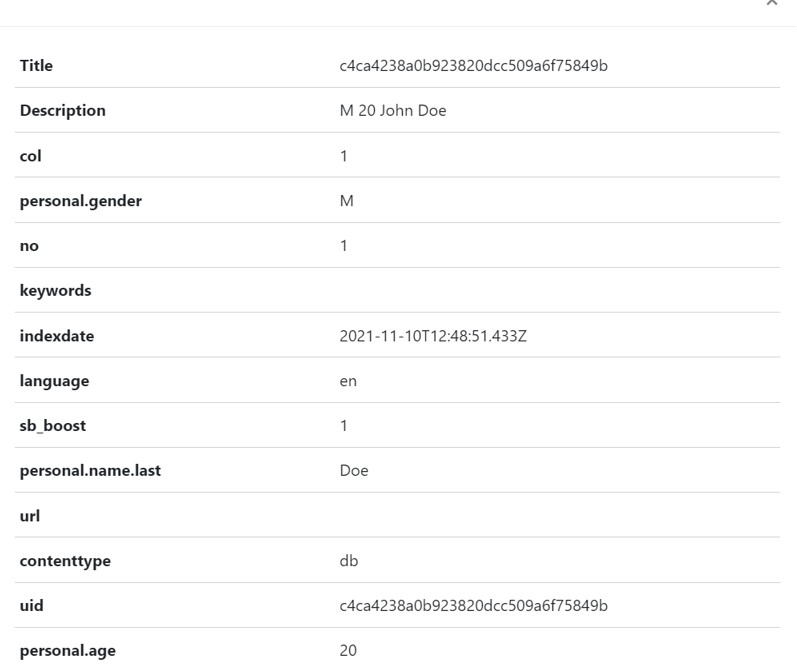
Updated 9 months ago
